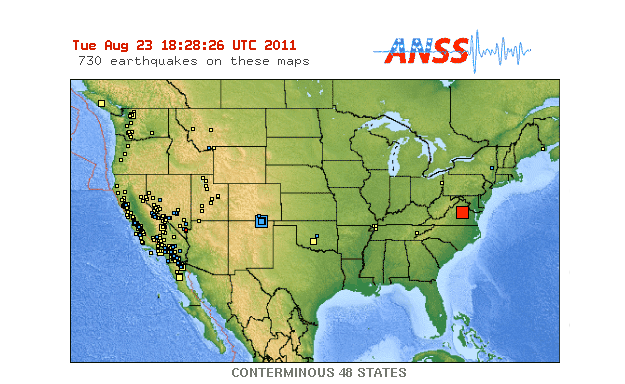
A 5.9 magnitude earthquake rocked much of the East Coast today, according to the US Geological Survey. The epicenter of the quake was located in Mineral, Virginia, which is in the middle of the state, about 45 miles Northwest of Richmond, VA. Tremors of the quake were felt more than 300 miles away, in New York City, and towns in northern New York state and elsewhere.
(Your reporter lives about two hours north of New York City, and I felt it here.)
Due to its relatively close proximity to Washington D.C., both the Pentagon and the Capitol Building, where pictures reportedly fell off the walls, were evacuated. Some firms on Wall Street also halted trading and evacuated due to the quake. So far, no major injuries or fatalities have been reported.
As of this writing, Verizon cell phone voice service was down for the greater New York area, though text messages were going through fine.
The USGS originally reported that the quake measured 5.8 on the Richter scale, but later upped the count to 5.9.
The largest recorded earthquake before today’s was a mere 3.6 in magnitude.
Of course, the most dynamic way to see the response to the quake was on Twitter, which, from your reporter’s observations, erupted with tweets mere seconds after Earth’s crust halted its violent shaking.
As with most recent breaking news stories, the best way to get up-to-the-second news and updates about the earthquake is on Twitter. Really, the only downside to using Twitter as a new source right now is that so many tweets are being posted about the quake that it’s impossible to keep up with all the news.
To see the most recent tweets related to the East Coast earthquake, click here.
